I recently returned from Nepal where I did the Annapurna Base Camp
trek (also called Annapurna Santuary) in ~10 days (adding 5 more for all the travel from the UK).
I took the following photographic equipment:
Overall, I was happy about the gear I took, both photographic and non-photographic (which I will discuss in a further post). I saw a lot of people dragging heavy DSLRs up the mountain, some even with attached battery grips, really large tripods, weighty tele lenses, and so forth. I would like to think that I achieved a very flexible kit which has the capability to take photos as good as theirs at a fraction of the weight.
Our route went (* = spent a night there): Kathmandu* -> Pokhara -> Nayapul -> Ulleri* -> Ghorepani* -> Poon Hill -> Tadapani* -> Chomrong* -> Dovan* -> Machhapuchhre BC* -> Annapurna BC -> Bamboo* -> hot springs -> Jhinu* -> Nayapul -> Pokhara* -> Kathmandu*. The portions between Nayapul and Pokhara were done in a car, and between Pokhara and Kathmandu in a plane.
The trek itself for me could be categorized in 3 stages. The first day and to lesser degree second day were quite difficult, as the path largely went straight up through what is called "3000 stairs". At night I had heart palpitations, difficulty sleeping, very vivid dreams/nightmares, and overall a (perhaps unjustified) concern that I may be pushing too hard.
Then I grew acclimatised and things suddenly got easier, the climb at 4am from Machhapuchhre BC to Annapurna BC felt relatively easy, even though I had had minor altitude-induced headache at MBC.
The way down felt a bit rushed and on the last two days one of my knees started aching really badly on descents, and I had some chafing, but got back alright and could relax in Pokhara.
Other lessons learned:
P.S. For now all of the pictures can be viewed here, after some more processing I will eventually post them also inline as blog posts:
Page 1
Page 2
I took the following photographic equipment:
- Olympus OM-D E-M5 (450g) - awesome camera that I got recently before the trip; I got used to the ergonomics and the menus, and really enjoyed the features it offers (mostly excellent IBIS, great DR, great EVF, the tilting screen which is very useful on tripod photography, etc.). As cons I can mention size/weight (yes, it seemed distinctly larger/heavier than my old Panasonic GF1 to the point that I couldn't carry it in the side hip backpack pouch as I used to, and had to move it to a front-dangling pouch which stressed my neck a bit), and concerns about battery endurance (was not a problem on this trip as I could pay to charge my batteries in lodge kitchens; might be a problem on other trips where that is not available). Overall, I was happy with the camera but had the Olympus Pen E-PM2 been available before my trip I would have probably gone with that due to the lower weight.
- Panasonic 20mm f/1.7 (100g) - lovely little lens, no complaints. Very sharp, very low weight. My go-to lens for astro-photography as the 9-18mm didn't work for that for me.
- Olympus 9-18mm f/4-5.6 (155g) - shot only at 9mm. Didn't work well at astro-photography as I never got the stars to display on the EVF so could never focus on them. Strange, could be I'm doing something wrong. I may consider replacing it with the Olympus 12mm f/2 for next trip to get better image quality, but then again 9mm is a lot wider than 12mm.
- Olympus 40-150mm f/4-5.6 (202g) - great lens, did everything that was asked of it, and very light for the very useful focal range it offers. With the better high ISO / IBIS of E-M5 it performed much better than on my previous trip w/ the GF1. Very glad I took it. Alternatives? There really weren't any for me, the Panasonic 45-200mm is much heavier and not as sharp, the other tele options are all way more expensive and generally aren't any better.
- One step-up ring and one step-down ring to bring all my lenses to 52mm filter thread size (~20g) - I could therefore use my two filters on any of my lenses
- Hoya ND8 filter (~13g) - used on waterfall shots
- Hoya HD circular polarizer filter (~13g) - used on quite a few landscape shots
- Home-assembled tripod which uses cheap tabletop tripod top in combination with carbon fiber custom-ordered legs which double-function as my backpack stays (50g) - The nice thing is that it only added ~50g to my daypack. The not so nice thing is that it only works well on level surface, and even then leveling the camera takes some fiddling. That being said, some waterfall shots would not have worked without it.
- Slik Sprint Pro II GM tripod (~1000g but in porter's bag) - excellent for the weight and price, performed very well. Went in the porters bag so was used for sunset/sunrise shots (carried it up Poon Hill and to Annapurna Base Camp for this purpose).
- About 18GB of SD cards of various sizes - of which I used up about 15GB
- Aftermarket wired remote (~30g in porter's bag) - always forgot to take it so never actually used it. Could have done without it easily.
- Original BLN-1 camera battery + two aftermarket batteries + two different chargers (one for each kind of batteries) (~150g in porter's bag) - mostly just used the original and recharged for $1 - $2 in the evenings.
Overall, I was happy about the gear I took, both photographic and non-photographic (which I will discuss in a further post). I saw a lot of people dragging heavy DSLRs up the mountain, some even with attached battery grips, really large tripods, weighty tele lenses, and so forth. I would like to think that I achieved a very flexible kit which has the capability to take photos as good as theirs at a fraction of the weight.
Our route went (* = spent a night there): Kathmandu* -> Pokhara -> Nayapul -> Ulleri* -> Ghorepani* -> Poon Hill -> Tadapani* -> Chomrong* -> Dovan* -> Machhapuchhre BC* -> Annapurna BC -> Bamboo* -> hot springs -> Jhinu* -> Nayapul -> Pokhara* -> Kathmandu*. The portions between Nayapul and Pokhara were done in a car, and between Pokhara and Kathmandu in a plane.
The trek itself for me could be categorized in 3 stages. The first day and to lesser degree second day were quite difficult, as the path largely went straight up through what is called "3000 stairs". At night I had heart palpitations, difficulty sleeping, very vivid dreams/nightmares, and overall a (perhaps unjustified) concern that I may be pushing too hard.
Then I grew acclimatised and things suddenly got easier, the climb at 4am from Machhapuchhre BC to Annapurna BC felt relatively easy, even though I had had minor altitude-induced headache at MBC.
The way down felt a bit rushed and on the last two days one of my knees started aching really badly on descents, and I had some chafing, but got back alright and could relax in Pokhara.
Other lessons learned:
- I'd not climb Poon Hill, it is basically a tourist trap. The same mountains can be seen from the path from Gorephani to Tadapani, except you a) have better foregrounds b) don't share the same few square meters with hundreds of other tourists c) Don't have to gain ~400 vertical meters only to immediately lose them.
- I'd consider flying directly to Pokhara (in our case from Delhi), skipping the whole Kathmandu part. I disliked the dirtiness and loudness of Kathmandu so much that I didn't do any sightseeing there. The traffic also seemed insane there. Pokhara was much nicer in that regard, more like a resort town. Kathmandu also seemed to have a lot of touts, and people who would sneak up to put your bag in the trunk of the taxi and then persistently demand tips for these 0.5 seconds of effort.
- We could have probably saved money if we had just hired a porter and done the rest of the organization ourselves.
- The only medicine (Compeed for blisters) I needed I of course had forgotten. Luckily, some friends we made on the trek helped with some. It was in my pre-travel checklist, I just had missed it - need to be more attentive.
- While ABC trek was very well maintained and the path quality was very good, it often felt overdeveloped - too many people, too many lodges. I'll certainly pick a more remote location next time.
- Bringing a lot of food to the ABC trek was not needed. I had heard stories from my friends about other Nepal treks and how getting decent food was difficult. In the case of ABC, it was quite the contrary. I had made the decision not to eat meat/fruit/salad in the mountains due to hygiene concerns, but found it easy to subsist on omelets of various kinds, vegetable soups, chapatis and a delicious Nepali staple - dal bhat (which generally comes with free refills, quite useful when expending so many calories). I had brought some biltong with me but ended up selling some on the way down as while it was still fresh and showed no sign of spoiling I just didn't get the opportunity to eat it.
- "Hot mint" (hot water with some mint leaves) is one of the best drinks to have on a trek. Healthy, refreshing and warming all at the same time.
- Whether to hire a porter or not depends on your physical condition. I personally would have had a miserable time without one, but I saw younger and fitter trekkers with both heavy and light bags going without. And I saw one group which had heavy bags despite having employed porters - they had simply brought so much stuff that it would have overloaded the porters who, while carrying superhuman loads up the mountains still have their limits.
P.S. For now all of the pictures can be viewed here, after some more processing I will eventually post them also inline as blog posts:
Page 1
Page 2
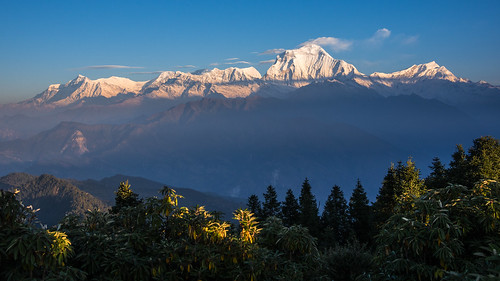
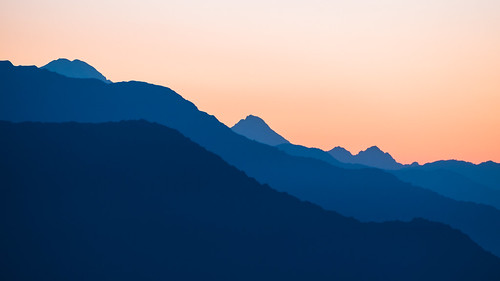
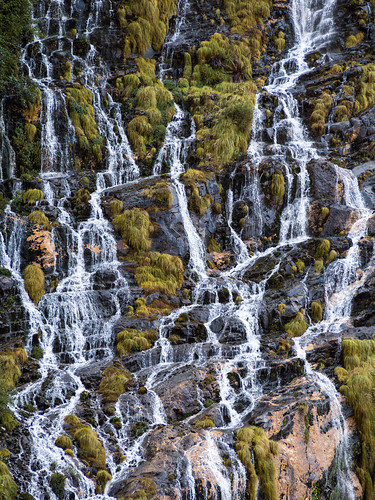
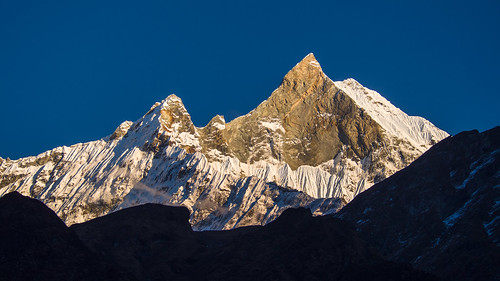

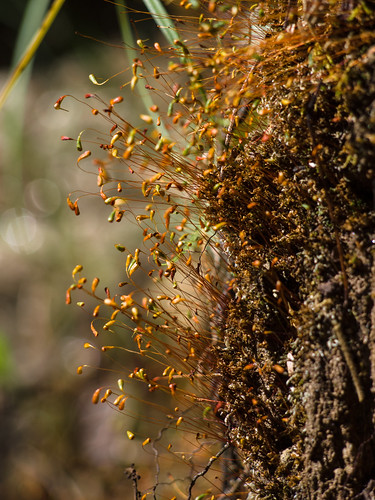
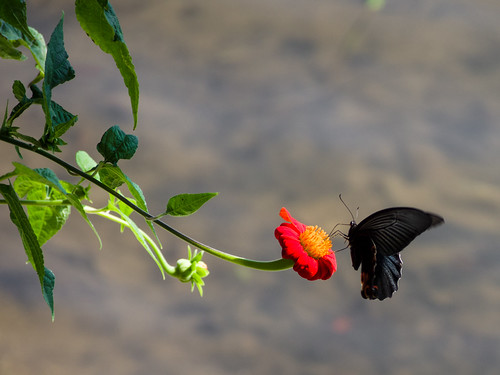
No comments:
Post a Comment